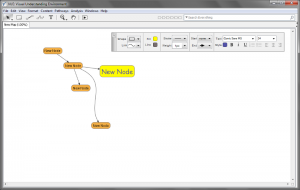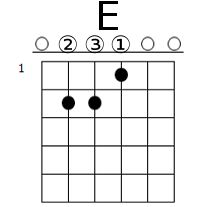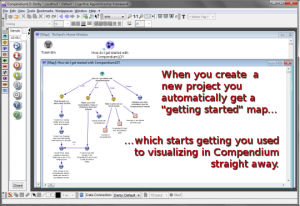In 1981 “cognitive apprenticeship” was a nascent framework proposed by early researchers with an eye on computer-assisted design of computer-enhanced learning environments that are “situated.” This means “authentic”
The research on the tailors did not result immediately or even very soon in an alternative to the theory for which it offered a critique. It did impel me to go looking for ways to conceptualize learning differently, encouraged by those three interconnected transformations that resulted from the project: (1) a reversal of the polar values assumed to reflect differing educational power for schooling and “other” forms of education; (2) a reversal in perspective so that the vital focus of research on learning shifted from transmitters, teachers or care givers, to learners; and (3) a view of learning as socially situated activity. This work couldn’t replace existing theories, but it provided incentives to ask new questions about learning.
—Jean Lave (1996:155)
activities taking place in the context of, and with the full support of, a “community of practice.” In general the other participants are—for the time being—more proficient than the learner at the given craft or activity. Learners and practitioners interact in a wide variety of ways, often over considerable time, that can be characterized as strategies or phases—observing and practising, receiving scaffolded (progressively adapted by the practitioners) coaching until working independently. The overly-theoretical sounding name has mostly gone by the wayside, but the concepts and application have matured. Still employing ethnography to gather thick qualitative descriptions, there’s now stronger input from the fields of design and architecture. The new name is “Design Learning.” I see parallels in research into tool redesign conducted at Open University NE and Open University UK.
“computers … can make the invisible visible … they can make tacit knowledge explicit … to the degree that we can develop good process models of expert performance, we can embed these in technology, where they can be observed over and over for different details” (p. 125).
Allan Collins, 1991:125
In 1992 Allan Collins and Ann Brown built on their earlier research (e.g., Collins, Brown, and Newman, 1989; Collins, Brown, Holum, Duguid, 1989; Collins, Brown, Holum, 1991) and conducted what they dubbed design experiments.; “Design experiments were developed as a way to carry out formative research to test and refine educational designs based on principles derived from prior research,” i.e., cognitive apprenticeship. There is a direct line from the Cognitive Apprenticeship Framework to Design Learning, (Collins et al., 2004) and recent experiments in the redesign of learning design tools (Conole et al., 2007) (LAMS, 2008) (OULDI-JISC, 2012).
They built on the work of Herbert Simon (1969) who regarded the “design sciences,” such as architecture, engineering, computer science, medicine, and education, as the “sciences of the artificial,” that have been neglected because of the lack of rigorous theories. John Seely Brown and and David Kearns co-founded the Institute for Research on Learning (IRL) in 1986 and adopted ethnography—the description of peoples’ customs and cultures—as its main research method. The Institute forged new understandings of how individuals enter and join learning communities, achieve acceptance, then themselves grow and evolve as vessels of community knowledge. As they do so they often increase interaction and engagement—i.e., collaboration—with secondary networks outside their primary one (Lave & Wenger, 1991) (Lave, 1996). Does it sound just a bit like joining Twitter?
Ethnography attempts “thick descriptions” in the style of Geertz. One of the more fundamental truths of pedagogy spotlighted by this approach is its “messy” and iterative nature. The motto of instructors and learners alike may be “If at first you don’t succeed, try, try again,” but it’s always with an eye toward improving on previous attempts.
Case studies are touted by a wide assortment of education stakeholders. They are used up front in planning, as course content, or as summary program assessment. A good case study can be a thick, descriptive ethnography of a situation.
By studying a design in practice with an eye toward progressive refinement, it is possible to develop more robust designs over time. […] Ethnography provides qualitative methods for looking carefully at how a design plays out in practice, and how social and contextual variables interact with cognitive variables. […] Design experiments are contextualized in educational settings, but with a focus on generalizing from those settings to guide the design process”
(Collins, Joseph, & Bielaczyc, 2004).
The Open University Learning Design Initiative have been working across several OU faculties and with 4 other universities to pilot curriculum design activities, identify and develop tools, and otherwise contribute to academic and practitioner research. If you’ve followed my Tweets or blog the past several weeks you’ve already heard of CompendiumLD. Follow the link to see more tools and other output from this prolific group.
All told these and associated authors (see also Conole, 2007, Conole et al., 2008) consulted close to 50 case studies, but they did not fall into a common pitfall of well-read academics: the automatic presumption of expertise. On the contrary, they embrace the messiness as evidence of authenticity and opportunity for iterative improvement. “The concept of a ‘learning design methodology’ has been integral …however, different readings of the term could, and were, made. …resisting a single definition has enabled us to connect more readily with diverse literatures and to orientate resources and tools towards user needs.” (OULDI-JISC, 2012)
I think that’s academic for, “There are no mistakes, only opportunities.” (—Tina Fey?)
Case studies and design experiments allowed these and other researchers to, among other things, map tools and strategies to the six instructional methods of cognitive apprenticeship and to develop a Scaffolding Design Framework to focus its use.
§
Reference
Brown, J. S., Collins, A., & Duguid, P. (1989). Situated cognition and the culture of learning. Educational Researcher, 18 (1), 32-41.
Collins, A., Brown, J. S., & Newman, S.E. (1989). Cognitive apprenticeship: Teaching the crafts of reading, writing, and mathematics. In L. B. Resnick (Ed.), Knowing, Learning and Instruction: Essays in Honor of Robert Glaser (pp.453- 494). Hillsdale, NJ: Lawrence Erlbaum Associates.
Collins, Allan; Brown, John Seely; and Holum, Ann (1991). Cognitive apprenticeship: Making thinking visible. American Educator: The Professional Journal of the American Federation of Teachers, 15(3), 6-11, 38-46, [reprint available on line at http://elc.fhda.edu/transform/resources/collins_brown_holum_1991.pdf (PDF) accessed 2012-09-17] or from The 21st Century Learning Initiative http://www.21learn.org/archive/cognitive-apprenticeship-making-thinking-visible/ (HTML), accessed 2013-02-19.
Collins, Allan; Joseph, Diana and Bielaczyc, Katerine (2004). Design Research: Theoretical and Methodological Issues, The Journal of the Learning Sciences, 13(1), 15-42.
Conole, G. (2007), ‘Describing learning activities: tools and resources to guide practice’ in Rethinking pedagogy for a digital age, H. Beetham and R. Sharpe (Eds), Oxford: RoutledgeFalmer.
Conole, G. (2008), ‘Capturing practice: the role of mediating artefacts in learning design’, in L. Lockyer, S. Bennett, S. Agostinho, and B. Harper (Eds), Handbook of Research on Learning Design and Learning Objects: Issues, Applications and Technologies.
Ghefaili, Aziz (2003). Cognitive Apprenticeship, Technology, and the Contextualization of Learning Environments, Journal of Educational Computing, Design & Online learning Volume 4, Fall, pp 1-27.
Geertz, Clifford (1973) Thick Description: Toward an Interpretive Theory of Culture, pp. 3-30, in The Interpretation of Cultures: Selected Essays, NY: Basic Books, 470 pages.
OULDI-JISC (2012) Cross, Simon; Galley, Rebecca; Brasher, Andrew & Weller, Martin, Final Project Report of the OULDI-JISC Project: Challenge and Change in Curriculum Design Process, Communities, Visualisation and Practice, Institute of Educational Technology The Open University, July 2012, www.jisc.ac.uk/media/documents/programmes/curriculumdesign/OULDI_Final_Report_instit%20story.pdf.
Simon, H. A. (1969) The sciences of the artificial. Cambridge, MA: MIT Press.




 The past 30 years in education research has seen the influx of big ideas from computer science, social anthropology, design and even architecture. We now say learning is situated in authentic social contexts many call communities of practice.
The past 30 years in education research has seen the influx of big ideas from computer science, social anthropology, design and even architecture. We now say learning is situated in authentic social contexts many call communities of practice.